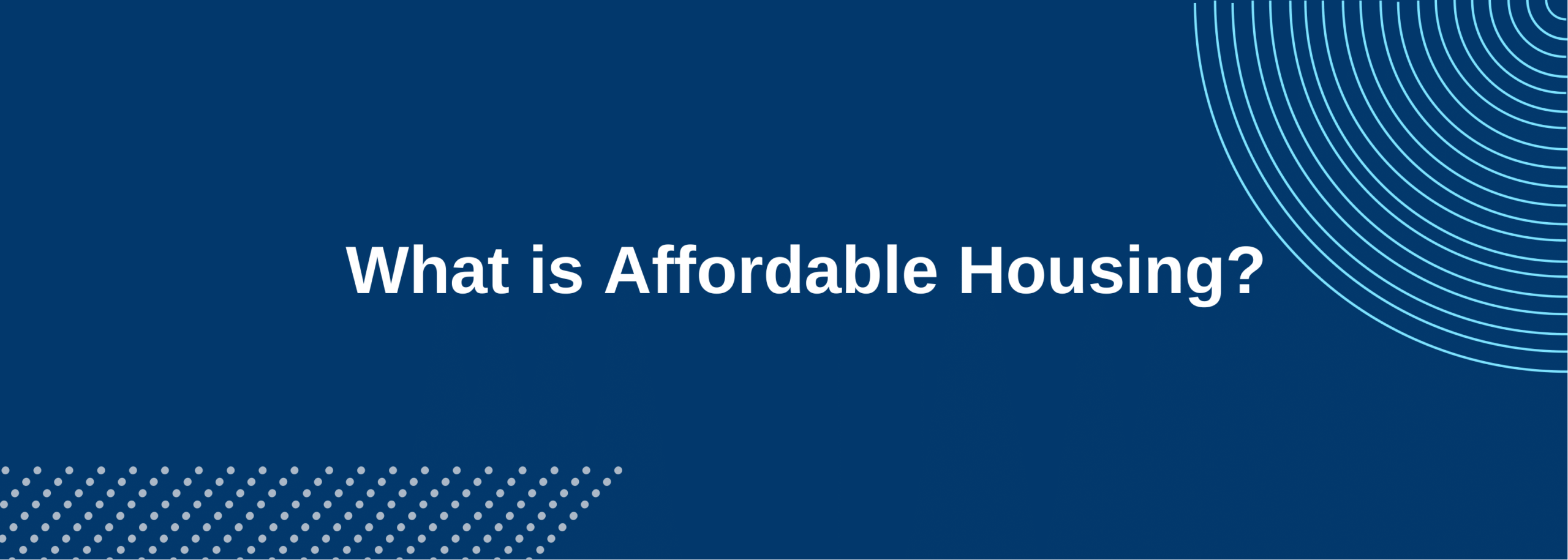According to the U.S. Department of Housing and Urban Development (HUD), affordable housing is “housing on which the occupant is paying no more than 30% of their gross income for housing costs, including utilities.”
Who is Eligible for Affordable Housing?
The idea that a tenant’s monthly rent should be less than 30% of their gross monthly income is often seen as the golden rule of budgeting, but in today’s hot market, many spend 30% or more on rent.
Anyone who spends more than 30% of their income on housing is considered to be cost burdened; anyone spending 50% of their income or more on housing is considered to be severely cost burdened. Both of these groups may be eligible for affordable housing programs offered by the government.
However, as Habitat for Humanity of Broward explains, the Area Median Income (AMI) is the metric that determines who can afford to rent an apartment based on where they live and their income. HUD establishes the AMI for every region in the United States. But if someone’s income is too low, they may not be able to afford the part of the rent cost even if it’s subsidized, so they wouldn’t qualify for affordable housing.
What are the Common Affordable Housing Programs?
As Habitat for Humanity of Broward notes, the “demand for affordable housing exceeds supply not only in urban areas but also in the suburbs,” which is partly why there are a few different methods to promote affordable housing. These include:
- Rent control, which “limits the frequency and amount the rent can be raised in order to protect vulnerable populations from eviction,” Habitat for Humanity says. Only six areas in the U.S. offer rent control as of writing, though more are looking to legislate the practice.
- Mixed-income housing, which houses people making between 30-60% of the AMI and charges less than market rent. Developers and owners of these units often receive tax credits, grants, vouchers, etc. in exchange for their participation.
- Housing vouchers, which Habitat for Humanity says are one of the main methods for housing subsidization in the U.S. Individuals and families who receive these vouchers can choose the location and type of unit they’d like to rent, then only have to pay 30% of their household income for rent. The voucher covers the remaining rent owed. However, vouchers are limited, and some families are on the waiting list for years.
Public Housing and Section 8
There are two additional affordable housing programs to consider: public housing and Section 8.
HUD says, “Public housing was established to provide decent and safe rental housing for eligible low-income families, the elderly, and persons with disabilities. Public housing comes in all sizes and types, from scattered single-family houses to high rise apartments for elderly families.” There are approximately 970,000 households living in public housing units owned by the government, and this type of housing is limited to low-income families and individuals. Generally, people can stay in public housing as long as they comply with the lease.
Section 8 housing is a government-funded program that helps low-income families and individuals pay for housing. It is sometimes called “subsidized housing” or a “housing choice voucher program.” In this program, a private property owner owns the housing, which must meet specific health and safety requirements.

